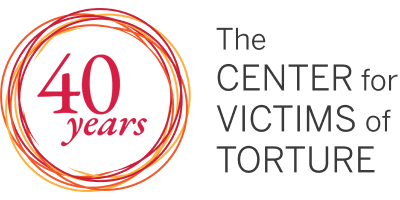Shab-e Yalda is known by many names including Zayeshmehr, Yalda Night, or Chellah or Winter Solstice. Falling on the darkest and longest night of the year, CVT’s Arman Project saw a Shab-e Yalda celebration as an opportunity: A chance to bring family and friends together for a celebration filled with food, dancing, poetry and music to foster community connection for their Afghan clients.
The history of Shab-e Yalda
Many cultures around the world acknowledge Shab-e Yalda, including those from Afghanistan, Iran, Azerbaijan, Kurdistan and Turkey. Ancient history from these regions say that Shab-e Yalda’s origin stems from the birth of Mithra – the god of sun and justice. Following her birth is when the days began to lengthen again until the spring equinox, symbolizing the triumph of light over darkness.
Later, the tradition of celebrating this day continued because of the shift in season’s positive impact on their livelihoods. “Historically for people from that region, their main line of work was farming,” said Azadeh Sadeghi, psychotherapist for the Arman Project.
“So they used to celebrate because they would have the opportunity to harvest more of their resources and do more farming because the days are going to be longer.”
According to the Arman Project team, many who celebrate Shab-e Yalda today aren’t always connected to those traditions or honoring Mithra, but instead use it as an opportunity to gather with friends and family. This is what the team wanted to tap into.
Fruits and poetry with cultural significance
“Since the project is targeted for the Afghan population, our team thought that it would be good to host such an event for our clients so they can come and be together to enjoy a space where they can celebrate their culture outside of their country, have a friendly event where they can enjoy our snacks, hang out with CVT providers and get with each other to have a good time,” said Nargis Naseri, case manager for the Arman Project.
Like many cultural gatherings, food is an important part of the celebration. With Shab-e Yalda, fruit and nuts are the star of the show, especially those red in color, like pomegranate and watermelon. These red hues in the fruits represent the color of dawn and the sweet, glowing parts of life. “We celebrated[…] by decorating the table…It was very important for watermelon and pomegranate to be on the table that night,” said Naseri.
The Arman Project’s spread also included other fresh fruits, dried fruits and sambusa – a savory pastry filled with vegetables and/or meat.
In addition to fortune telling, music and poetry are also vital parts of a Shab-e Yalda celebration. The team leaned into all three of these pieces, including bringing in an Afghan singer to play the dambura and sing traditional Afghan folk songs for the group and sharing aloud poetry from famous Afghan poets.
The tie between connection and wellness
The team’s hope was to help build community among their clients, with the overall goal of improving survivor mental wellness. According to Dawood Azeemy, M.D., project lead for the Arman Project, social connectedness and loneliness are some of their top priorities to address with their clients, and they are hopeful that events like these will continue to support the wellness of their clients who have survived so much.
“We thought if we have this , then it might help them with their mental health improvement – that was our main objective,” said Azeemy.
“We know that this is something that not all Afghans celebrate – even if the majority of them are celebrating, it’s not all of them. But, our point of view was that this event might help them to connect with other families and community members and have some good time with them, and this will improve their mental health.”
While the long-term mental wellness of these survivors will be an ongoing process, the team immediately received positive feedback about the event, letting them know they’re on the right track.
“Right after the event, the husband of a client – who is also a client but he didn’t come to that event – called me and told me, ‘Thank you so much for having this event. Because my wife was very happy when she returned home…happy wife, happy life.’,” Azeemy laughed, recalling the conversation.
“‘My wife became very happy and I’m happy, and we request to have things like this in the future.’” he continued.
Sadeghi shared feedback as well, saying, “When I met with clients during their appointments with me, they were glad that they attended the event and had the opportunity to celebrate Shab-e Yalda inside the United States with some other people from their culture.”
These are just a few examples of commentary the team received, as their WhatsApp group with their clients was flooded with pictures and positive notes.
Mezhgan Shren Zada, the Arman Project’s peer and community educator said,
“Some talked about how although they don’t have their relatives here, they enjoyed [the event] and gathering with other people. They were so excited that it was changing their mind about living in this country, and said that although they don’t have their relatives here, they are not alone.”
Overall, the Arman Project team and clients consider their Shab-e Yalda event a success. As a brand new team focused on a highly marginalized population, CVT is proud of the impactful work already being done, and we’re looking forward to future events and initiatives the team leads.
